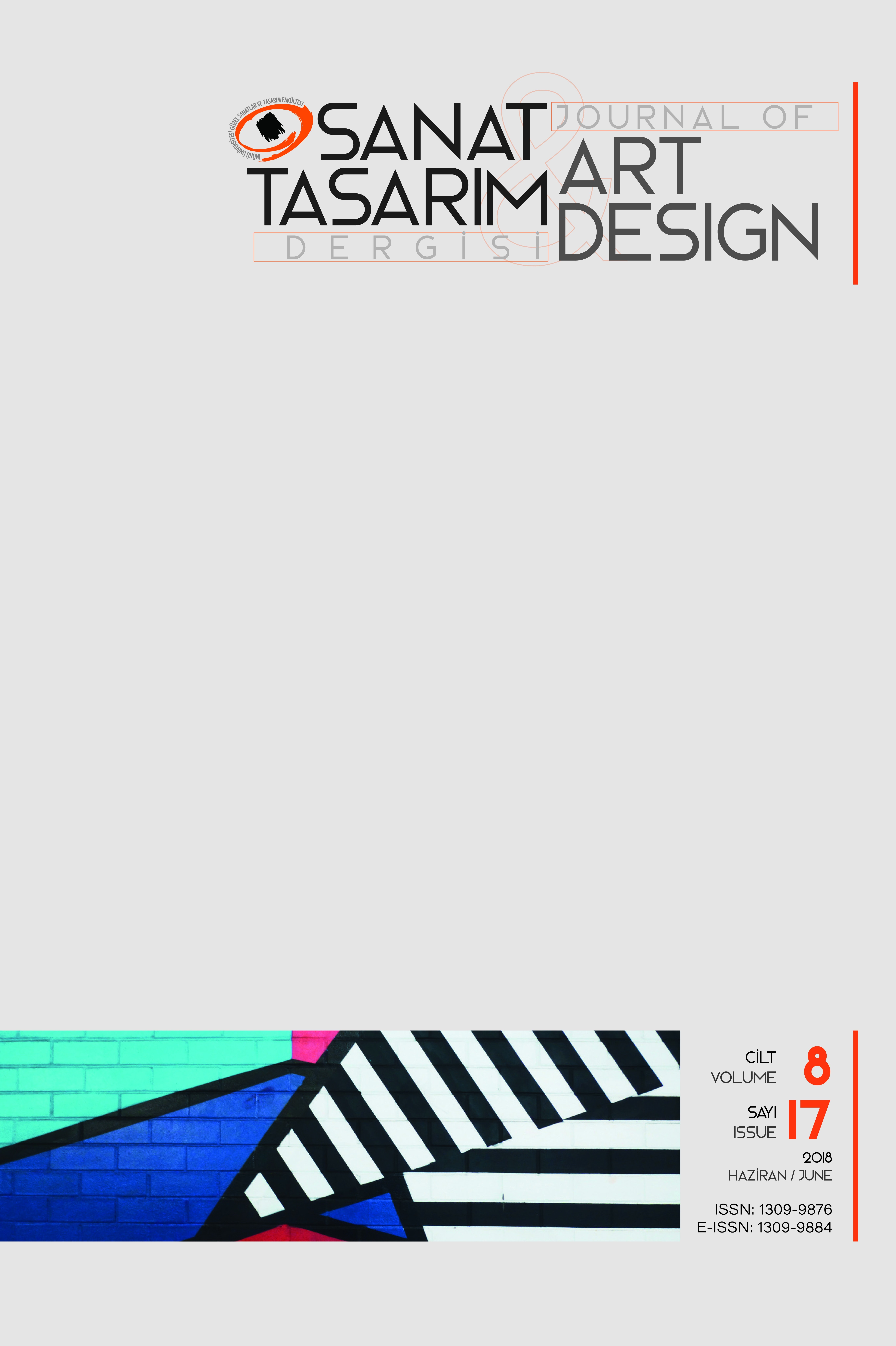CULTURAL HERITAGE AND WEAVINGS: FEMININE HISTORIC GARMENTS IN HARPOOT FROM THE NINETEEN TO THE TWENTY CENTURIES
Harpoot region, Silk fabrics, Museum, zili weaving
___
- References
- Atasoy N., Denny W. Mackie W. L. and Tezcan H. 2002. Silk (Ottoman Weaving Art). London: TEB Press, p. 1-360
- Avci. M. 2013. Apparel Culture in Harpoot Provinces in the 19th century, Master's thesis, Kahraman Maraş Sutcu Imam University, p. 1-131
- Aytaç A. 2010. Traditional hand woven. Selcuk University Press, Konya, p.89-90.
- Baytop T. 1997. Turkish Plant Names Dictionary. High Board of Atatürk Language and History Turkish Language Society Press.Ankara, p. 1-512.
- Blanco J. 2010. Fashion at the museum: Successful experiences with student curators. Museum Management and Curatorship 25: 199-217; Sauro C. 2009. Digitized historic costume collections: Inspiring the future while preserving the past, Journal of the the USA Society for Information Science and Technology, 60: 1939-1941.
- Cross, S.2009. What opportunities can university museums offer for academic-public interaction? Some lessons from London’s Beacon for Public Engagement. University Museums and Collections Journal 2: 23-25.
- Dulum S. 2006. Women’s status, education and business life in the Ottoman Empire 1839-1918. Master's thesis, Eskisehir Osman Gazi University, p.80.
- Haig V.1959. Kharberd ev anor voskeghen dashte [Kharberd and Her Golden Plain ,New York: Kharpert Compatriotic Union. accessed February 15, 2014. http://www.houshamadyan.org/; Dzeron B. M. 1938. Parchandj village: A Complete History 1600- 1937. Boston: Panorama West Books, accessed February 15, 2014. http://www.houshamadyan.org/
- Inalcik H. 2008. Turkey Textile History Studies. Turkiye Is Bankasi Cultural Press, Istanbul, p.1-366.
- Karadağ R. 2007. Natural dyeing. T. C. Culture and Tourism Ministry Press, Ankara. p.1-127.
- Lennon J. S. and Burns D. L. 2000. Diversity of research in textiles, clothing, and human behavior: The relationship between what we know and how we know. Clothing and Textiles Research Journal 18: 213-226.
- Marcketti S. B., Fitzpatrick E. J., Keist N. C. and Kadolph J. S. 2011. University Historic Clothing Museums and Collections: Practices and Strategies. Clothing and Textiles Research Journal, 1-28.
- Paoletti B. J. 1984. Does the costume and textile historian have a place in the future? ,Clothing and Textiles Research Journal 2: 33-36.
- Quataert, D. 1993. Ottaman Manufacturing in the age of the Industrial Revolution. Cambridge University Press
- Salam-Liebich H. 2007. Masterpieces of Persian textiles from the Montreal Museum of Fine Arts collection. Iranian Studies, 19-29.
- Somuncu M. 2004. Importance of Cehri Production and Trade in Kayseri’s Economy in the 19th Century, Journal of Economics and Administrative Sciences, 99-125.
- Tezcan H. 1993. Cotton, Woolen and Silk: Fabrics Collection. İstanbul: Yapi Kredi Collections Press.P. 1-272.
- Tuzcu A. 2000. Economic Structure of Kayseri in Consulate Reports and Through the Eyes of Pilgrims from the Beginning the 19th Century to the First Quarter of the 20th Century, 3rd Kayseri and Around History Symposium Declarations, Kayseri and Around History Researches Center Publication, Kayseri, 526-552.
- Victoria and Albert Museum. 2011. “Furniture, textiles, and fashion”, accessed May 1, 2014 http://www.vam.ac.uk/about_va/whoswho/collections/dept_furniture/index.html.
- Welters L. 2010. Embroidery on greek women's chemises in the metropolitan museum of art, Gleed Press, New York, p. 1-47.
- Yapici S. 2009. Harpoot In Ottoman Yearbooks, 1869-1908. Eleskav Press, Elazig, p. 1-127
- ISSN: 1309-9876
- Başlangıç: 2011
- Yayıncı: İnönü Üniversitesi
SANAT FELSEFESİNDE KÜLTÜREL BİR METAFOR OLARAK KADIN İMGESİNİN ÇAĞDAŞ SERAMİK SANATINA YANSIMALARI
GENÇLERİN İHTİYAÇLARINA BAĞLI OLARAK KAMPUS AÇIK MEKAN TASARIMI
Tuğba Düzenli, Sema MUMCU, Buket ÖZDEMİR IŞIK
GARDENING AND CHILDREN’S GARDEN
Sima Pouya, Yasemin CINDIK AKINCI, Öner Demirel
KAHRAMANMARAŞ AHİR DAĞI’NIN PEYZAJ KARAKTERLERİ YÖNÜNDEN DEĞERLENDİRİLMESİ
ARKEOLOJİK PEYZAJLARIN SUNUMUNDA KULLANILAN YAPISAL ÖGELER
RÖNESANS DÖNEMİ RUFF YAKA’NIN GÜNÜMÜZ MODASINA YANSIMALARI
BAŞLANGIÇ SOLFEJ VE DİKTE ÖĞRETİMİNDE EZGİ KALIPLARI MODELİNİN UYGULANMASI ÖRNEĞİ
KEÇE ÜZERİNE FARKLI YÜZEY DÜZENLEME TEKNİLERİ İLE GİYİLEBİLİR SANAT ÜRÜNLERİ
